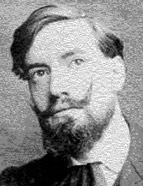

His first step was to perform a seriation of the sources: "a) official documents on the organisation of the armada; b) direct testimonies of those who had travelled or collaborated therein; c) information transmitted abroad by the King or Italians, both during the journey and a few days after the arrival of Cabral’s first ships". Only then would the relevance of other documents be considered, such as Cantino's letter, the accounts of Castanheda, João de Barros, Damião de Góis, Jerónimo Osório, Gaspar Correia - which he duly reflected on and relativised - as well as the "Livro das Armadas” [Book of the Armadas"]. "A comparative examination of the original sources brought an immediate advantage: their unquestionable and reciprocal authenticity [those passed on in translated form might have aroused doubts] was established, since they coincided entirely, except for minor divergences underlying each of the documents. Additionally, as they completed and clarified each other, it was possible to form an entire scheme of the most notable facts of the expedition, including their chronological scale. And while some of the most serious problems related to the journey remained unsolved in this schematic account, due to its indisputable veracity, it functioned as a standard against which the fidelity of the accounts of the chronicles could be compared. This scheme was truly a touchstone." (A Expedição…, pp. 41-46). Attentive erudition. Comparison of sources and pursuit of authenticity in testimony. Concern with the intention behind the formulation of each one. Choice and hierarchy of documents prior to the overall architecture. And also other concerns with visions other than those of historiography.
As early as 1925 he gave a conference (of which there is no written text) in Lisbon, at the Universidade Livre [Free University], which was significantly entitled "As relações entre a Geografia e a história de Portugalo” [Relations between geography and the history of Portugal"]. Knowledge of space (and its importance for the study of societies across time) has since remained as Cortesão's essential contribution to the History of Portugal - and hence also to the pursuit of understanding the art of sailing and the instruments constructed to such end. The 1925 article "A tomada e ocupação de Ceuta” [The seizure and occupation of Ceuta"] gave deserved prominence to the hypothesis previously advanced by António Sérgio (in Ensaios [Essays], 1920) and discussed by David Lopes, while also referring to other research, such as that of Pedro de Azevedo. In a lengthy account, supported by excellent bibliographical sources, Cortesão took evident delight in highlighting Portugal's situation in the great trade between the North Sea and especially the Mediterranean Sea, the sea across which the valuable goods brought from Asia, especially the spices, were transported. That the great trade was in crisis and could be resolved with the seizure of Ceuta was credited to Sérgio; that the city was an important maritime port with strategic interest for the combat of piracy was credited to Lopes.
